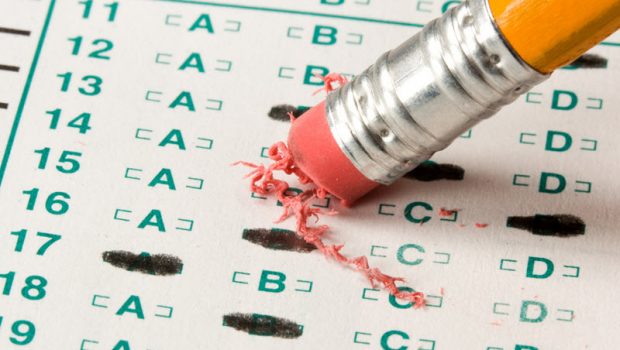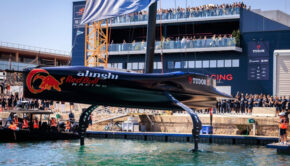America’s Cup to be Tested Again
Published on September 11th, 2017
by Craig Leweck, Scuttlebutt
Following their successful America’s Cup Deed of Gift Challenge in 2010, the Larry Ellison owned and Russell Coutts led Oracle team went on a mission reshape the event. Their objective was to create a competition that wasn’t just for sailors to follow, but for everyone.
Creating interest was integral to their larger plan to heighten the commercial attraction of the event. There weren’t enough billionaires to fund teams, they worried, and the relevance of the America’s Cup would fade if people wouldn’t compete in it.
No doubt valid concerns for a team that could and would outspend everyone. After two failed campaigns, and a vicious court battle that led to their win, Ellison finally held the trophy that no one may want if they have to race against him.
But if the Defender could drastically improve the commercial interest, a new funding model would eliminate the need for the billionaires. Critical to the plan, however, would be the show. The America’s Cup had to move from being a historic sporting event to an entertainment entity.
Working with a clean sheet of paper, the Defender brought together a design consortium to determine the path forward. However, for those involved in the process, the paper wasn’t completely clean. The choice wasn’t between monohull or multihull as believed, but more about what type of multihull.
It was time to shorten the skirt on the old gal and create excitement, and the speed of multihulls would do that. More so, multihulls would allow for the racing to be close to spectators. No longer would the America’s Cup be held miles offshore, but rather in sight of that critical metric: footfall.
There were many takeaways from the 2013 test in San Francisco. Boats that weren’t meant to foil did, becoming both dangerous and groundbreaking. While not wholly popular with their base of sailing fans, non-sailors began paying attention. The broadcast was epic while land-based spectating proved hard.
But in the end, despite all the changes to boats and format, it was the comeback story that dominated the headlines. As Coutts admitted afterwards, the story trumped everything…even the boats. If the Defender hadn’t recovered from their 1-8 hole to win 9-8, the opinion of this grand experiment would have been much different.
With momentum on their side, Ellison/Coutts sought to leverage the lessons. A smaller, speedier catamaran would now easily foil, and if they made it less of a design contest and more of a sailing contest, it would increase the odds of a good story. Monetizing live spectators was difficult, so it was a full focus on selling broadcast rights. More television would deliver more commercial appeal.
The second test in Bermuda delivered. The boats were crazy fast, the racing was often good, and the broadcast quality was again exceptional. But the 2017 edition was also drifting away from the essence of the America’s Cup. Business-related decisions were impacting the unique elements of the event. And the sailing didn’t look like anything most sailors did.
Among the six teams competing, five of them had agreed to continue the format for the next America’s Cup, regardless of who won. The lone dissenting voice came from New Zealand, and with them now holding the Cup, they seek to amend the policies of the previous administration.
The 36th America’s Cup will have:
• A nationality requirement for competing crew members.
• A “constructed in country” requirement for competing yachts.
• An exciting, relatable monohull that challenges a full crew sailors.
Standing by for the next test in 2021.









 We’ll keep your information safe.
We’ll keep your information safe.